MusicRadar Verdict
A solid entry-point into the acoustic-look/electronic kit market. What it lacks in sound quality, it makes up for in playing feel and style.
Pros
- +
It's incredibly affordable compared to the competition
- +
All hardware included
- +
User sample import
- +
Bluetooth
- +
Looks great
Cons
- -
Lacks the functionality of more sophisticated kits
- -
Some internal sounds are a little dated and lack tonal depth
MusicRadar's got your back
What is it?
You might have noticed a change occurring in the electronic drum set market over the last few years. What were once a collection of pads and sort-of-like cymbals have evolved into an ever-growing trend for real wood drum shells, in playable ‘real life’ sizes.
Roland’s VAD range is arguably the front runner, but other brands such as ATV, EF-Note, Jobeky and more have also been creating hybrid acoustic-shelled electronic drum sets for a while.
The latter helped fuel many acoustic conversions during the lockdown, which remains an affordable way of achieving the same thing, as long as you’re willing to spend some time doing the modding.
A recent newcomer to the market, though, may put paid to some of the heavy lifting of converting your own kit. You're probably already familiar with Millenium thanks to its affordable-yet-quality products which span everything from hardware to acoustic kits, snares and electronics.

The latest to come from Millenium is the MPS-1000: a ‘full-size’ acoustic-looking electronic kit comprising five mesh head-equipped acoustic shells, an acoustic stand-mounted hi-hat, two crashes and one ride cymbal pad.
As well as this, it includes all of the hardware you need to get set up straight out of the boxes, including cymbal stands, hi-hat stands, a dedicated module stand and a bass drum pedal.
They even throw in some sticks, although you will need your own stool. But the real headline here is the price. As currencies fluctuate, so do Thomann’s prices, but at the time of writing you can bag all of the above for £833, including delivery and you don’t need to worry about import duty, VAT or any other charges. The price you see is the price you will pay. So, at roughly a quarter of the price of Roland’s VAD 506 setup, is it too good to be true?
Want all the hottest music and gear news, reviews, deals, features and more, direct to your inbox? Sign up here.
- Explore the best electronic drum sets for kids
Performance and verdict
The build
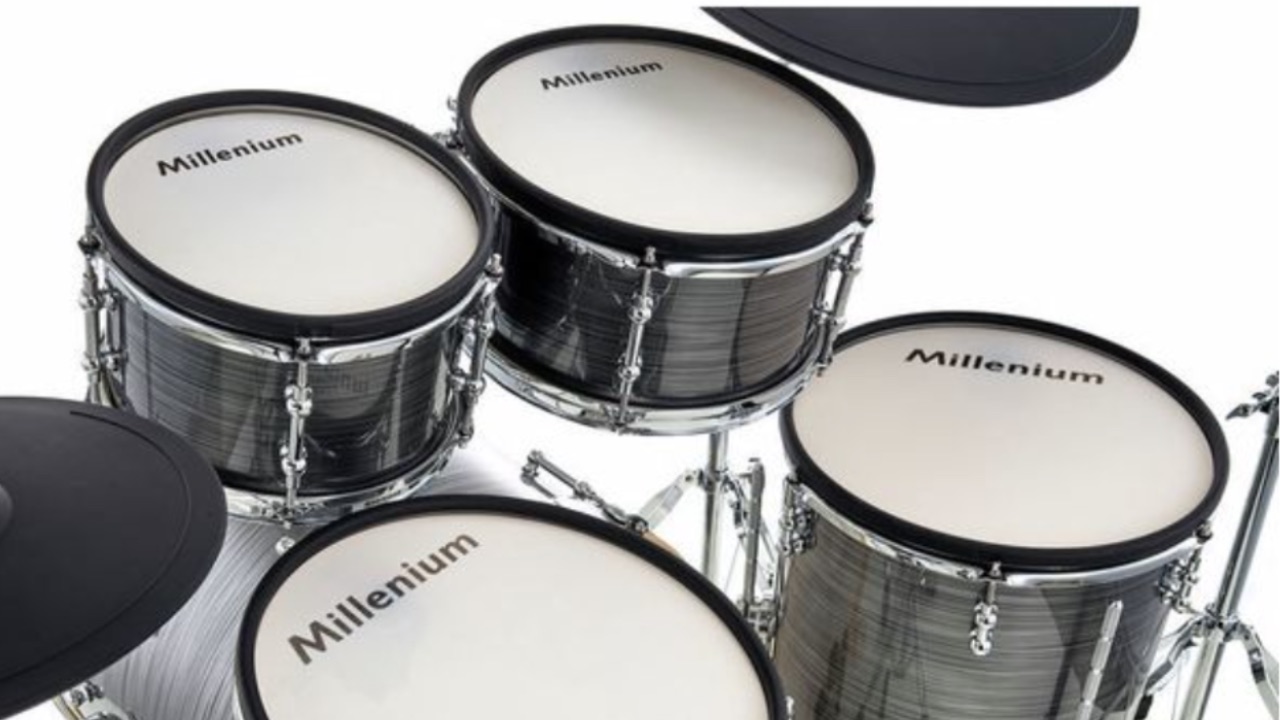
Our kit arrived in a number of boxes, shrink-wrapped on a pallet. Be prepared for a lot of cardboard, but helpfully, everything is packaged in its own internal box which is also labelled so you can easily find everything while you’re setting up.
The MPS-1000 is full size, but it’s essentially a fusion-size kit, that means a 20” bass drum, 10”, 12” and 14” toms and a 13” snare drum. This is roughly the same sizes as Roland’s VAD 506 setup, with the exception of the snare drum.
The whole kit is wrapped in a silky Grey Line finish, and each drum is fitted with mini-tube lugs, which is nice to see considering Millenium could have easily opted for cheaper, more standard-style units at this price. The triple-flanged hoops are covered with rubber shrouds to keep the noise down while the bass drum hoops are finished in a matching wrap.
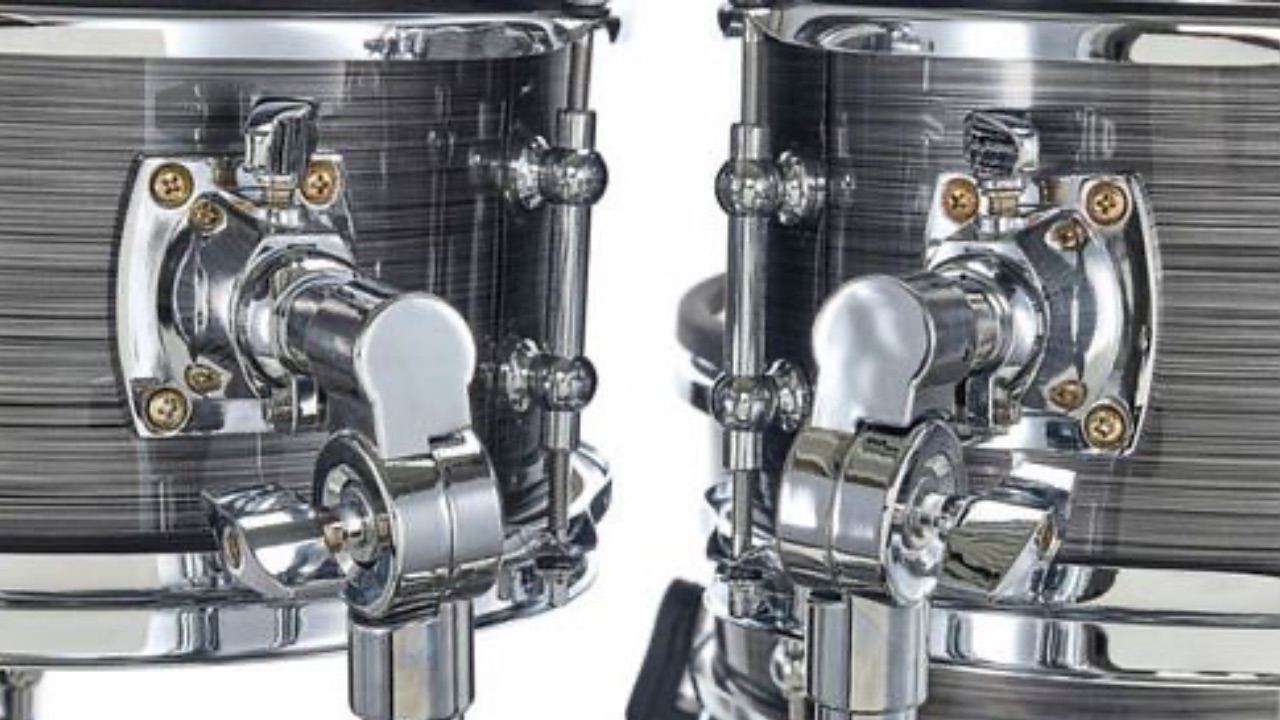
The toms are post-mounted to the bass drum using a Pearl-style tube. Obviously there’s no tonal debate to be had over drilling vs virgin bass drums here, and bass drum-mounted toms really do come down to preference for most people.
If you’d prefer, you can obviously remove the post entirely and hang the toms from a cymbal stand for more flexible placement, but it’s worth noting that the holder only rotates on one axis rather than giving you an ‘omni’ rotation from a ball-socket.
Now, we said these are full-size fusion pads, however the depth of both rack toms is the same at 6-inches. Once again, this has no bearing on anything other than placement and look, but it does essentially mean that you’re playing a ‘fast-size’ setup, with matching depths across the top bringing back a slight reminder that these things started out life as pads, not acoustic drums.
That’s a very minor gripe though, which is unlikely to bother most people after the first hour or so.
Cymbals
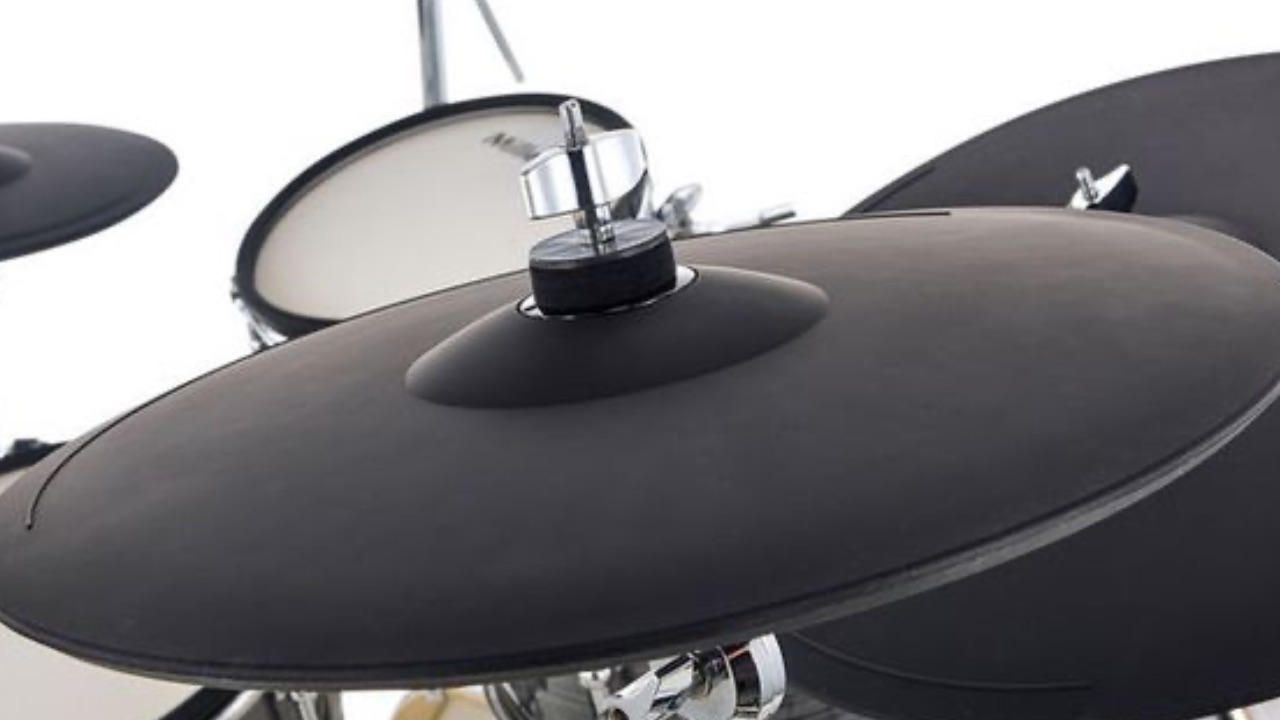
The cymbal pads also offer plenty of realism, too, with Millenium opting for ‘odd’ sizes on the hi-hat and crashes at 13” and 15” diameter respectively. Both are dual-zone, with a choke function, referred to as ‘stop’. The ride cymbal is 18”, and features three zones - bow, edge and bell as well as being choke-able too.
They’re coated across 360-degrees with rubber, which is smooth to the touch and each cymbal mounts to the stand using Millenium’s mounting system which also prevents spinning and they have a nice natural swing to them.
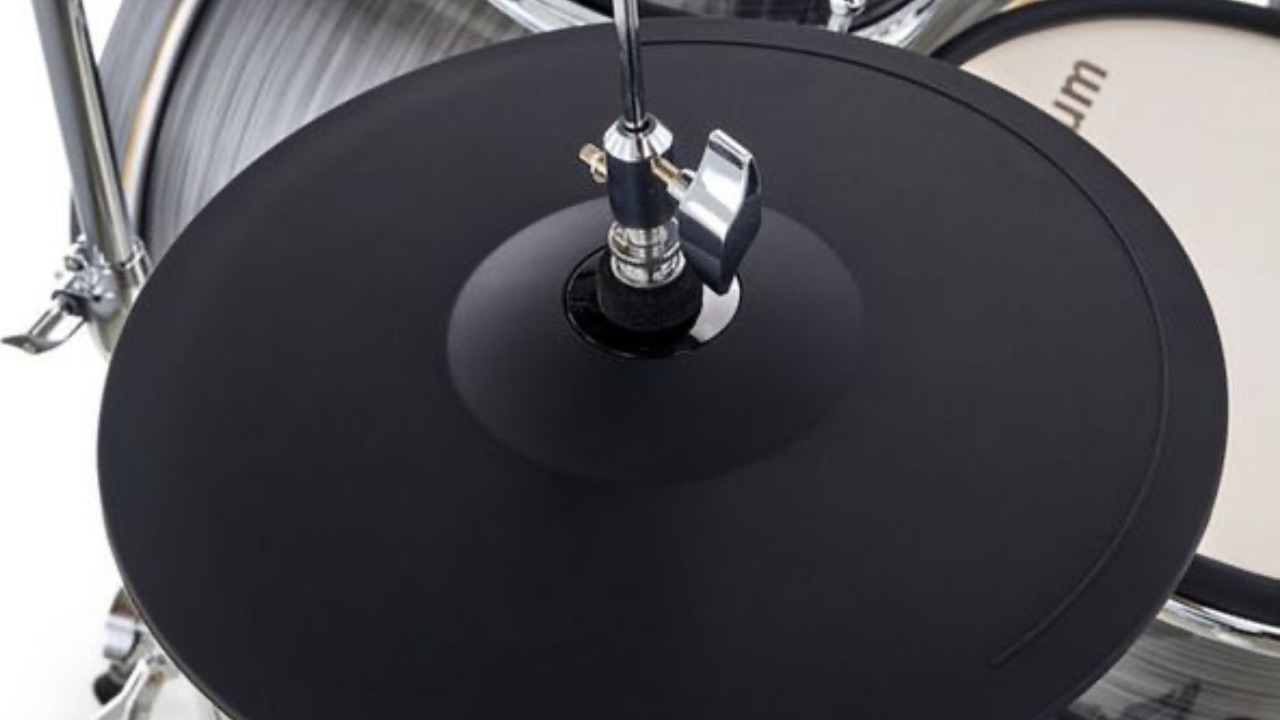
Within the module the bow/edge sounds can be assigned independently on each of the cymbals, which also means you can use each part of the pad for additional cymbal sounds if you choose to.
The hi-hat is a single-pad, with the switching/sensor part for open and closed functionality built into the pad. It sits inside the diameter of the ‘cup’ and while it looks a little cumbersome, once we’re plugged in we found it to be fast and responsive. We were able to play speedy 32nd-note patterns with open and closed barks without misfiring, which on a budget hi-hat is great news.
MPS-1000 module
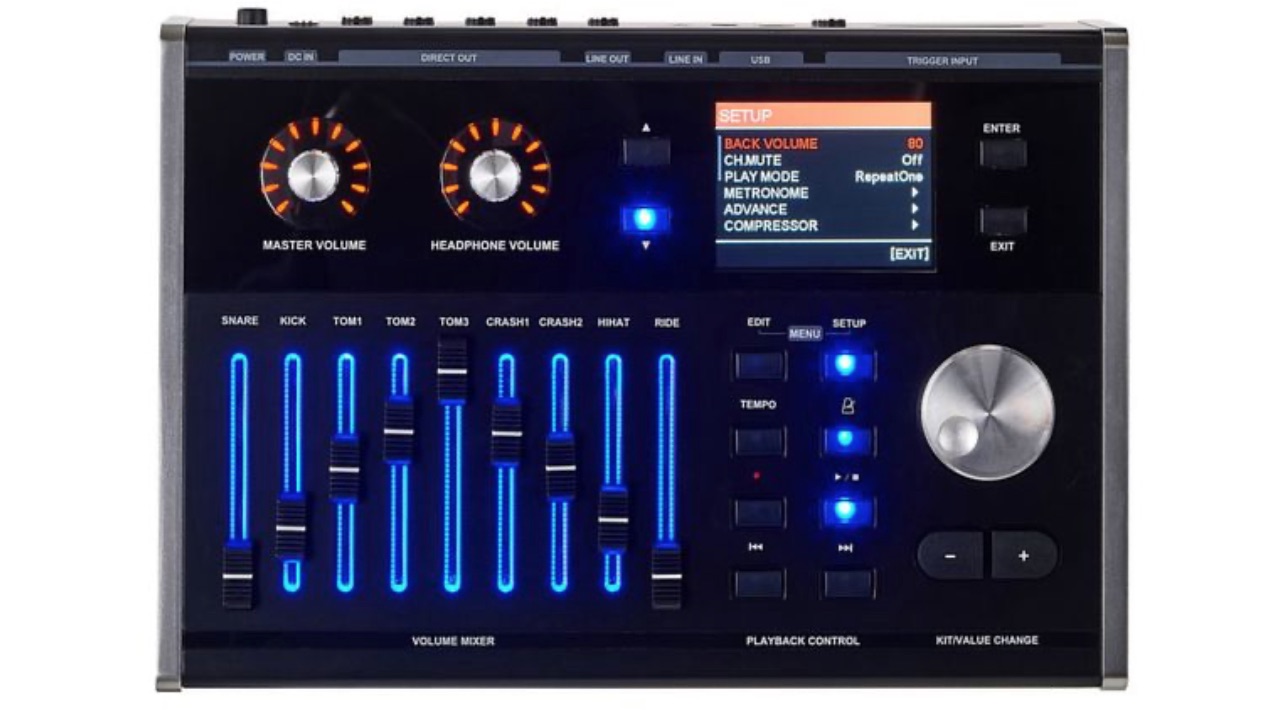
Central to the kit is the MPS-1000 module, which features 820 sounds in total offering a standard-fare selection ranging from acoustic kits to samples of classic drum machines, world and orchestral percussion and more. arranged into 40 preset kits.
There’s a further 40 slots for you to save your own kit creations into, plus it comes stocked with 70 play-along songs for you to jam to. While these are great to have, what’s even better is the fact that the module also includes Bluetooth, so you’re free to beam whatever music you like into the kit, and blend it with your drum sound for jamming.
The front panel itself is nicely laid out, with some stylish looks, and individual faders for each voice. There’s a 3.2” colour LCD screen in the top right, and thanks to the clearly marked function buttons we found it incredibly easy to use without having to resort to reading the manual until we were trying to access some of the module’s more advanced options.
The pads connect to the module via a 25-pin cable snake, as commonly seen on kits from other brands. As well as the integrated cables, there’s an additional trigger input for hooking up an extra cymbal pad, plus the Ext socket which allows you to connect an extra trigger or pad. In addition to this, there’s a 3.5mm aux input for running a wired audio connection into the module.

Audio outputs are comprehensive too, with a L/R master output, headphone output (either 6.35mm or 3.5mm, with its own volume control) and eight direct output sockets which are all freely-assignable. The MPS-1000 can also transmit MIDI over USB, and there’s an additional USB socket for plugging in a memory stick.
That’s because as well as its own sounds, the MPS-1000 also allows you to import custom .wav files for utilising in your kit, a feature that has become increasingly in-demand, and it’s great to see it appearing on lower priced kits.
That’s a lot to take in, but the proof, as they say, is in the padding. We’ll start with the sounds, which as we’ve already mentioned offer a lot of options, and we think it’s fair to say that Millenium has opted for a broad range over a smaller number in great detail.
Sounds and features
While the sounds are absolutely serviceable, there's a lack of detail to the samples, which does mean they sound a little basic, and there is some machine-gunning going on. It’s most noticeable on the acoustic sounds, where a bit more depth and sustain would really benefit the overall feel of the kits.
Obviously the synthetic sounds already mask some of this, and we should add that there’s some great contemporary electronic sounds to be found within the kits beyond the usual 808/909 type samples.
But, as with any electronic kit, you can remedy some of this by getting your hands dirty in the menu system and tweaking the interaction between the drums and the module.
With some changes to the sensitivity, headroom and velocity curve controls we were able to improve the response of the kit immediately. It’s something that we think is far too commonly overlooked, as everyone plays differently and it would be impossible for electronic drum manufacturers to tailor this for every player straight out of the box.
As well as this, some quick experimentation with the on-board EQ and compression can bring back some of the beef to the sounds that need it, and similarly experimenting with some of the reverb effects can add a little depth to the tone of the kit. It does require some menu-hopping, and it would have been great to have quicker access to these functions in an ideal world.
So, with the kit responding more naturally to our playing style, there’s a lot more to explore. Hooking up to the Bluetooth - unlike on some gear we've tried - couldn’t be easier, as it’s always on as long as the module is switched on. This means you just have to search for it on your device, select it, and you can be jamming with your music collection instantly.

One intriguing feature of the MPS 1000 is its ability to import user samples. Not very long ago, this was something that was more commonly done with sample/percussion pads, but has made its way onto electronic drum kit modules in the last few years.
Now, we should point out that this function - even on modules costing more than this entire kit - still tends to be limited when applied to a drum module. Don’t expect to be loading-in multi-layered samples of your acoustic kit.
Instead, Millenium has opted to keep things simple. In short, you place a 16-bit 44.1khz wav file of the sound you want to use on a USB stick, plug it into the module and import it into the MPS-1000’s user memory via the global settings menu. From here, you simply go into your kit settings, hit the drum you want to assign the sample to and select your file from the list of imported sounds. It’s then saved within your kit just as with any of the internal sounds.
It’s basic: you only get one sample layer per-playing zone, and unlike more sophisticated modules you can’t blend it with internal sounds. There’s no control for how the sample is played back either (loop/alt etc), and it just reacts as a regular one shot, plays through the length of the file and then stops. As such, the length of the sample is capped, so you won’t be able to import full song backing tracks.
But for a lot of people, we don’t think this is necessarily a bad thing. It’s a great introduction into using your own custom sounds, and of course you can hack it slightly by creating the sample to react more how you’d like in the first place.
For example, we imported a ‘playable’ one-shot of a pre-layered snare/clap/finger-snap which we created in our DAW. Likewise, we made a two-bar conga loop which we could trigger by hitting the rim of the tom. By placing the same loop on a cymbal pad, you’re able to use the choke function of the cymbal to stop the loop.
If you don’t want to have to create your own sounds, you can download thousands of samples and loops in many genres from our SampleRadar archive. We found in both cases that the MPS-1000 triggered our imported sounds perfectly, with no latency or playback problems.

Overall feel
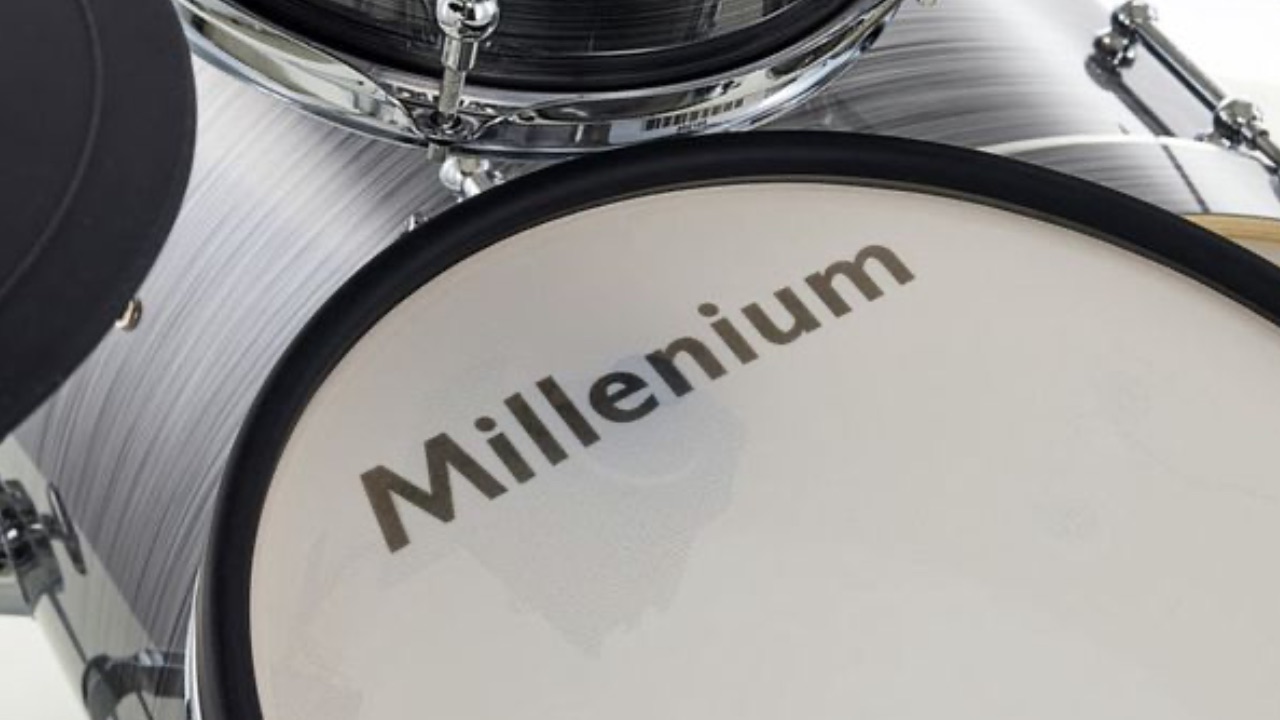
We’ve so far overlooked one of the most important factors of why you’d buy a kit like this in the first place, rather than a regular pads-on-a-frame setup. The answer is feel. It’d be easy to float off into phrases like ‘experiential’ and ‘vibe’ at this point, but unfortunately that is kind of at the core of the entire concept.
How much difference do real shells at an approximate size of an acoustic kit make? After all, you’re striking the same type of playing surface. Well, try assembling an acoustic kit made out of 8” or 10” drums with barely any depth and you have your answer.
While playing an electronic kit comprising pads solves a lot of problems - space being one of them - you don’t get the same physical feel, lack of movement or spacing between small pads. This in-turn changes your perception as a player and makes transferring between electronic and acoustic kits more of a jump.
We have to tip our caps to Millenium here. The MPS-1000 looks great for a start, and the fact that it comes with decent quality, double-braced hardware at this price really makes it a comprehensive setup. But we do say ‘at this price’ with a caveat.
That price tag incorporates everything from the shells, mesh heads to the hardware and the module. So you have to look at where your money is being spread, it’s a big ask to expect premium-level playability, features and sounds across the board when the competition is substantially higher cost. There’s no multi-positional sensing, no fancy digital triggering, no audio interface, and there’s limited sound manipulation when compared to more expensive kits.
Instead, what you get is a set of shells and cymbal pads that are ready to plug in straight away. The overall feel of the kit is great - solid and good quality. The sounds are totally usable for practice, and if you do want to perform live, the direct outputs will give you the opportunity for further EQ-ing and processing (although we’d suggest that just as with any electronic kit you’ll need a great PA system and most likely an engineer to handle this side of things while you play).
The trump card for the MPS-1000 at this price, though, is something we haven’t touched on yet. That’s using it with a third-party, computer-based sound set such as Superior Drummer, Steven Slate Drums, Get Good Drums or one of the many other collections that are available - something that drummers have been doing for years from much more expensive kits.
This obviously ignores much of the module’s on-board capability, but allows the MPS-1000’s USB MIDI port to turn the kit into one of the most affordable, realistic MIDI controller kits available.
We’d be surprised if this wasn’t a key part of Millenium’s thinking when conceiving the MPS-1000: make the shells look decent and play well, and the module passable at an affordable price for drummers who want to use software.
Either way, it’s impossible to knock the value for money that’s on offer here, whether you intend to use it as a standalone kit or not.
Hands-on demos
ArtOfDrumming
Thomann
Drums Bondeo
SUONO DISTORTO (using Toontrack Superior Drummer)
Specifications
- Type: electronic drum kit with real shells
- Drum pads: 13"x5" snare, 10"x6" rack toms, 14"x14" floor tom (all dual-zone), 20"x16" bass drum (single-zone)
- Cymbal pads: 13" hi-hats (dual-zone), 2x 15" crash cymbals (dual-zone), 1x 18" ride cymbal (three-zone)
- Hardware: Snare stand, 3x cymbal stands, hi-hat stand, tom holders, module stand
- Sounds: Over 800
- Kits: 40x user, 40x presets
- Other features: Bluetooth, 8x Direct outputs, user sample import (USB stick), 70 playalong songs, metronome, 23 FX including compression and EQ per-pad

Stuart has been working for guitar publications since 2008, beginning his career as Reviews Editor for Total Guitar before becoming Editor for six years. During this time, he and the team brought the magazine into the modern age with digital editions, a Youtube channel and the Apple chart-bothering Total Guitar Podcast. Stuart has also served as a freelance writer for Guitar World, Guitarist and MusicRadar reviewing hundreds of products spanning everything from acoustic guitars to valve amps, modelers and plugins. When not spouting his opinions on the best new gear, Stuart has been reminded on many occasions that the 'never meet your heroes' rule is entirely wrong, clocking-up interviews with the likes of Eddie Van Halen, Foo Fighters, Green Day and many, many more.




